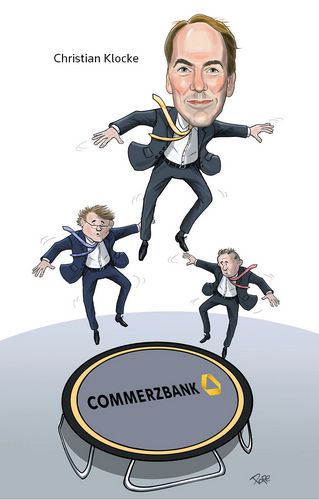Ready for take-off
Commerzbank has always held its own in the covered bond market, but 2017 proved to be the year it firmly entrenched itself as a major player. For its hard-fought transformation to covered bond heavyweight, Commerzbank is IFR’s Covered Bond House of the Year
Long seen as an expert in the sector, particularly in its core European backyard, Commerzbank had not necessarily competed with its larger peers when it came to critical mass. Now, however, it has steadily climbed the ranks, broadened its franchise and penetrated new geographies.
“Pfandbriefe and covered bonds are one of our core products and an important franchise,” said Max Jacob, head of DCM bonds bank origination at Commerzbank.
A slew of standout deals capture the bank’s progress and versatility in terms of the transactions it has managed for clients over IFR’s awards period.
It made a strong start to 2017 as joint lead manager on ABN AMRO’s €2bn 1.125% January 2032, an unusually large 15-year that proved the depth of demand for longer maturities was very much alive in the first weeks of the year.
It also delivered a €500m 0.5% July 2022 for Bank of Queensland, the lender’s inaugural covered and the first from Australia in a conditional pass-through format.
The deal was a long time in the making. Commerzbank was appointed as far back as September 2016 to introduce the bank’s potential programme to investors, but the transaction itself did not emerge until the following June.
The mandate reflected the bank’s strengthening coverage in Asia and Australia, a sign of its increasing global reach while leveraging the expertise at its European hub.
“It was a very important step into the Australian and New Zealand market – for us, a new target market,” said Jacob.
Bank of Montreal, BNZ International and ASB Finance also number among the non-European names that Commerzbank helped raise covered debt for in the single currency.
The bank was picked to lead Berlin Hyp’s €500m 0.125% October 2023 deal in June, the only Green covered bond of 2017. It strengthened its SRI credentials further with Kommunalkredit’s €300m 0.375% July 2021, the first Social covered bond out of Austria.
It was also a co-lead on Royal Bank of Scotland’s dual-tranche euro and sterling trade after more than half a decade away from the market.
“We’ve placed cornerstone transactions, not typical covered bonds,” said Jacob. “It’s been a very successful 2017. I am proud to say, we cover all the different aspects of the covered bond market.”
Commerzbank was also front and centre as the Greek lenders returned to the bond market, acting as joint lead manager on Eurobank’s first public covered transaction, and co-lead for National Bank of Greece.
Commerzbank capitalised on its deep access to the German investor base to help place the bonds, helping make both trades roaring successes – crucial steps in weaning the country’s lenders off costly central bank support.
“There was a lot of traction with traditional covered bond investors,” said Christian Klocke, a syndicate banker at Commerzbank. “Getting them into the book is what stands out.”
As in other areas of the financial debt capital markets, covered bond issuers enjoyed unfettered access virtually all year.
The European Central Bank’s bond purchase programme continued to play a major role in the market, supporting the compression of spreads in jurisdictions where paper is eligible – and dragging other markets with it.
That said, challenges remained in the asset class, not least because access to other parts of the market, other sources of funding and structural changes in banks’ liability stacks meant banks were not necessarily under pressure to issue, ramping up the competition to secure mandates. Euro covered benchmark supply has now fallen for three consecutive years.
“We’ve been getting market share in a shrinking market,” said Jacob.
Though now well-established, the conditional pass-through format, for example, still proves a hurdle for some investors given the extension risk, while relative value, particularly with regard to non-eurozone names, remains a key point of discussion.
The prospect of tapering and potential re-investment by the ECB were also key focal points this year. Commerzbank’s syndicate and origination teams are supported amply in this respect by its highly-regarded research function.
“For every new transaction you need to wake yourself up again, and not just assume the central bank will buy,” said Klocke.
To see the digital version of this review, please click here.
To purchase printed copies or a PDF of this review, please email gloria.balbastro@tr.com.



